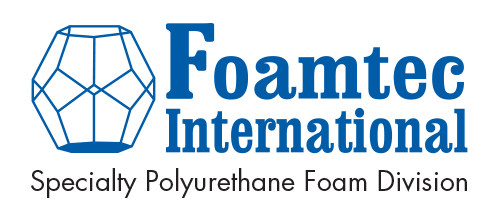Transforming Texture: Exploring Felted Foam
Polyurethane foam’s open cell structure makes it an excellent choice for applications that require softness, flexibility, and breathability. One process used to enhance open-cell polyurethane foam's properties is felting. Felting refers to the process of heating and compressing the foam, which condenses the thickness while increasing the foam’s density. In the case of open-cell polyurethane foam, this process forms a durable material with a wide range of applications.
Felted foam is used in various industries due to its unique properties, including high resilience, filtration capabilities, and excellent cushioning. The felting process further enhances these properties and expands the material's potential uses. In some cases, felting may also alter the foam's surface texture, making it smoother or more uniform. This can be advantageous in applications where a consistent appearance or tactile quality is desired.
Felted Foam Benefits:
1. Liquid wicking and holding properties: Felted foam improves the hydrophilic property of the base foam improving a felted foam’s performance in containing (holding) liquids and/or wicking liquids.
2. Easy to Work With: Felted foam is relatively easy to cut, shape, and install, making it a convenient material to work with over a variety of applications.
These benefits make felted foam an excellent choice for a wide range of commercial and industrial applications.
Applications:
1. Filtration: Reticulated polyurethane foam is the unsung hero in the world of filtration. Reticulated with its word origin in Latin means “net-like” or “little net.” The felting process creates a more condensed “net-like” product for increased air and liquid filtration.
2. Industrial Applications: In industrial applications, felted foam is used due to its ability to absorb sounds and dampen vibrations. It can help to reduce wear and tear on machinery, and appliances, which contributes to longer operational life.
3. Electronics: Felted foam is also used in the electronics industry, specifically to control ink flow in inkjet printers, as it is equally efficient at liquid holding or liquid wicking.
4. Medical: Due to its ability to hold and release liquids, felted foams can be used to both dispense liquids at controlled rates and are perfect to use in reservoir functions.
The Foamtec Advantage:
Foamtec International’s Specialty Foam Division is a significant player in the field of specialty foam manufacturing and fabrication in Asia, particularly known for being the largest provider of felted polyurethane foam in the region. Our production capabilities and strategic location in Thailand position us as a key supplier for both regional and global markets. Our commitment to quality ensures industry-leading products in the specialty foam industry.
Overall, the felting process of polyurethane foam can transform a versatile material into a multifaceted marvel. As technology and innovation continue to advance, the potential for new applications of felted foam remains promising, making it an exciting area of exploration for industries and consumers alike.
Reach out to us if you would like to know how Foamtec International’s felted foam can improve your current foam supply chain, or to learn more about our vertically integrated services.

